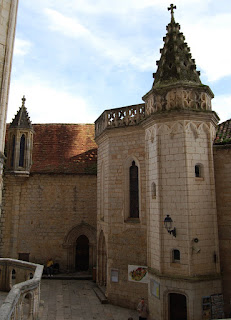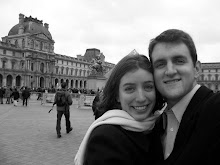.jpg) The longer that we live in this area of Normandy, the more we enjoy and appreciate it. The sunsets over the water, our hikes, the changing weather, the farm life and verdant fields, the history, the nature, the quiet and tranquility. Sometimes we like to get out and just see what the sky is doing. The winds and currents are strong here, so the face of the sky is constantly changing, with every color, shape of clouds, and angle of sunlight imaginable. Add to that the canvas of the Channel and we are constantly entertained by the shafts of sunlight that beam through the clouds to touch the water with a song...
The longer that we live in this area of Normandy, the more we enjoy and appreciate it. The sunsets over the water, our hikes, the changing weather, the farm life and verdant fields, the history, the nature, the quiet and tranquility. Sometimes we like to get out and just see what the sky is doing. The winds and currents are strong here, so the face of the sky is constantly changing, with every color, shape of clouds, and angle of sunlight imaginable. Add to that the canvas of the Channel and we are constantly entertained by the shafts of sunlight that beam through the clouds to touch the water with a song...Gardening in the backyard.. We try to keep our window boxes blooming...
The more neighbors we meet, the more we appreciate this little village... We have found the people who live here to be friendly, helpful, and active in their community. They seem to really care about and take care of each other. We have enjoyed aperitifs, coffees, and dinners with neighbors. We have been given vegetables fresh from the garden, tools to borrow when we need them (such as a drill, shovel, and lawnmower), flowers and plants, and helpful advice. Our neighbors have taught us about the history of the area, gardening, French culture and language,.jpg) and about taking time for things that matter. I have never lived in a small town (or small French village). Now I know what it is like to not be able to walk down the street without stopping to chat with someone. It is a nice change and learning experience for both us.
and about taking time for things that matter. I have never lived in a small town (or small French village). Now I know what it is like to not be able to walk down the street without stopping to chat with someone. It is a nice change and learning experience for both us. .jpg)
.jpg) and about taking time for things that matter. I have never lived in a small town (or small French village). Now I know what it is like to not be able to walk down the street without stopping to chat with someone. It is a nice change and learning experience for both us.
and about taking time for things that matter. I have never lived in a small town (or small French village). Now I know what it is like to not be able to walk down the street without stopping to chat with someone. It is a nice change and learning experience for both us. .jpg)
.jpg)
.jpg)
.jpg)
.jpg)
.jpg)
.jpg)
.jpg)
.jpg)
.jpg)
.jpg)
.jpg)
.jpg)
.jpg)
.jpg)
.jpg)
.jpg)
.jpg)
.jpg)
.jpg)
.jpg)
.jpg)
.jpg)
.jpg)
.jpg)
.jpg)
.jpg)
.jpg)
.jpg)
.jpg)
.jpg)
.jpg)
.jpg)
.jpg)
.jpg)
.jpg)
.jpg)
.jpg)
.jpg)
.JPG)
.JPG)
.JPG)
.JPG)
.JPG)
.JPG)
.JPG)
.JPG)
.JPG)
.JPG)
.JPG)
.JPG)
.JPG)
.JPG)
.JPG)
.JPG)
.JPG)
.JPG)
.jpg)